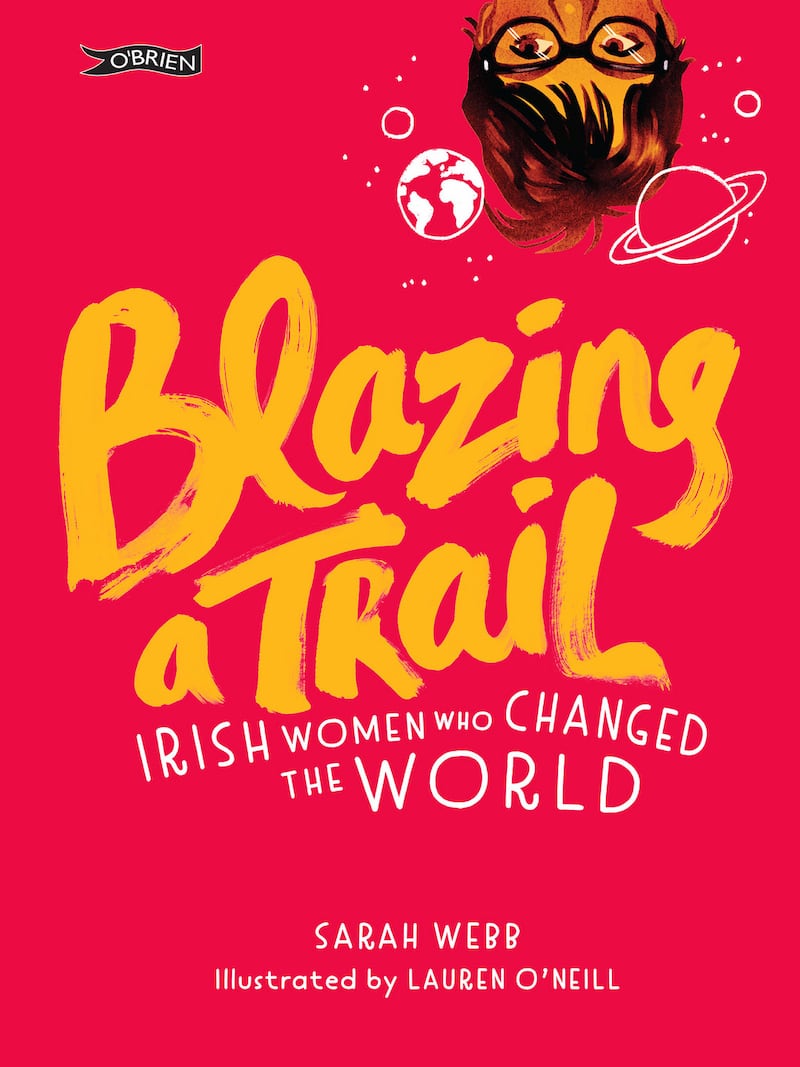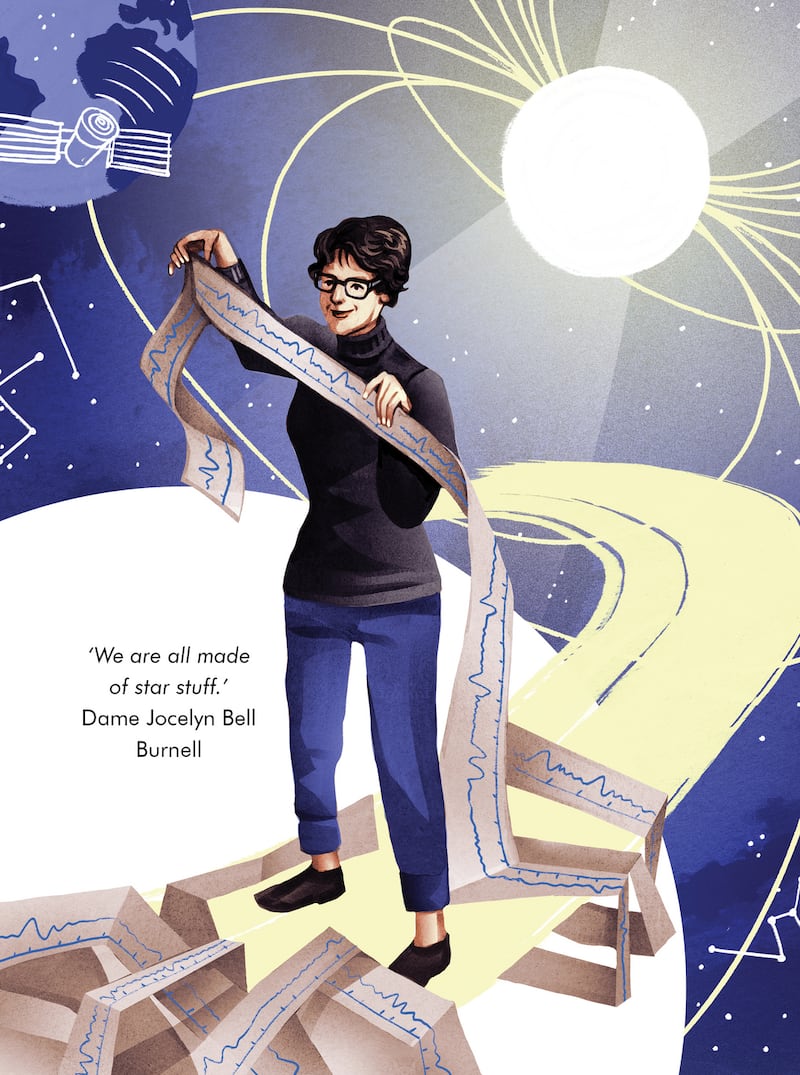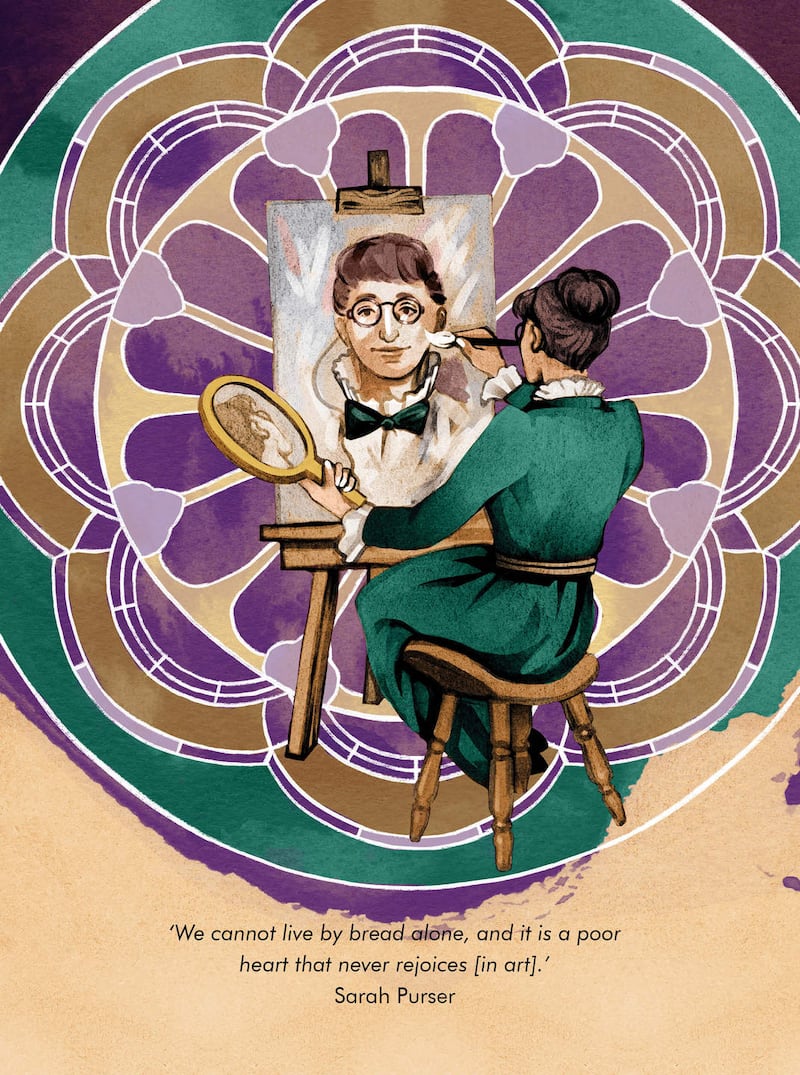At school I was taught that men were the history makers, the creators, the artists, the scientists. I loved English at school and carefully read my English text books, Exploring English 1 and Soundings. Of the short story writers in Exploring English 1 there were 19 men and two women (Mary Lavin and Katherine Mansfield). Soundings included the poetry of a lone female, Emily Dickinson.
As I got older the gender balance in my text books didn’t get any better. I read history of art at college where I learned about the artists, architects and designers who shaped our world. I studied the great Renaissance painters, the Impressionists and the Modernists. Guess what they all had in common? I’ll be polite and say male genes.

Over the years as I read more broadly and deeply I began to realise that women of the past were painting and drawing. They were also helping to set up ground-breaking exhibitions and entire galleries like Mainie Jellett (the Irish Exhibition of Living Art in 1943) and Sarah Purser (the Hugh Lane Gallery). Women like Eileen Gray were designing furniture and buildings. They were active in life but not in the history books.
In 2016 I stumbled upon an American book called Women in Science: 50 Fearless Pioneers Who Changed the World by Rachel Ignotofsky and read about Dame Jocelyn Bell Burnell, the woman who discovered the pulsar star. I suddenly realised she grew up near Belfast – she was Irish. Then Goodnight Stories for Rebel Girls came out and Granuaile was included (as Grace O’Malley) in its round-up of extraordinary women.

I started to think about other amazing Irish women – from Hannah Sheehy Skeffington to Countess Markievicz. I remembered that the founder of the Royal Ballet, Dame Ninette De Valois, was Irish and was reminded as #metoo unfolded that Maureen O’Hara had called out sexism in Hollywood in 1945. “I don’t let the producer and director kiss me,” she had said.
My writer’s mind started to kick in. There’s definitely a book in this, I thought, a book about remarkable Irish women. And I bet there are loads of other women I haven’t yet discovered.
So I typed up a proposal for the O’Brien Press outlining a possible book and within days they got back to me. “We love the idea,” they said. “How quickly can you start working on it?” I dropped everything and started research for Blazing a Trail immediately.
First I had to decide who to include. I wanted it to be a book for all children – from sporty girls and boys (and I very much want both to read it) to science-loving girls and boys. So I knew I’d need to include women from all spheres of life. I also wanted to include some future trailblazers, women from the 21st century who young readers could identify with – actors Ruth Negga and Saoirse Ronan, athlete Gina Akpe-Moses, boxer Katie Taylor, scientists and business women Annie and Kate Madden (both still in their teens), activist Sinéad Burke and writer Louise O’Neill.
I know my way around the arts but when it came to science and sport I needed help so I wrote to experts in these areas. Mary Hannigan, sports journalist for this paper, suggested Anne O’Brien as one of Ireland’s leading sports women. I researched Anne online as there are no books about her and managed (through Twitter and Mary) to track down her brother, Tony, who filled in the gaps. He spoke about his sister with such love and pride, it really made Anne come alive for me.
Journalist and writer Lindie Naughton talked to me about Maeve Kyle and also aviator Lady Heath (Lindie’s book about her is a classic); and people in the science world were also hugely generous with their time and expertise – especially science journalist Maria Delaney, Prof Peter Gallagher from Trinity College Dublin and Marion Palmer from Women in Technology and Science.
As I researched I realised something very striking: these pioneering women didn’t have to be good, they had to be outstanding – better than the men. They had to be braver, fight harder, study longer, put up with people telling them that women weren’t clever enough to be aviators or vets or even to vote!
Two years later the book is finally in my hands. It’s been a huge labour of love for both myself and Lauren O’Neill, the illustrator who has captured each woman’s spirit with such style and pizzazz.
I’ve been asked who is my favourite trailblazer in the book. It’s impossible to answer. They are all incredible. However, I will pick two women who have personal resonance for me.
The first is Sarah Purser. Sarah was an artist, patron and businesswoman who was born in Dún Laoghaire in 1848, the town where I live. She studied art in Paris and became well known for her portraits.

In 1903 she set up An Túr Gloine (the Tower of Glass) and thanks to her excellent sales skills, it became a worldwide success, exporting glass to churches around the globe.
Every Tuesday, Sarah held salons in her house for artists, writers and academics. My grandfather, WB Stanford, was a classics professor and attended these salons with my grandmother.
Sarah also helped establish history of art courses in both Trinity College Dublin (the course I studied) and UCD. So she is indirectly responsible for my abiding love of art and architecture.
The second is Mary Robinson. In 1990 she was inaugurated as the first female President of Ireland. I was 20 years old at the time and I had voted for her, proudly and loudly. They say you cannot be what you cannot see. I saw President Mary Robinson leading our country, standing up for the marginalised in society, making a difference. I saw her standing with all those men behind her as she spoke about women being "written back into history" and I knew if a woman could be President, I too could do anything I wanted if I set my mind to it. For me that was writing a book and I published my first book at the age of 27. Now, more than 30 books later I'm still at it!
Blazing a Trail: Irish Women Who Changed the World by Sarah Webb, illustrated by Lauren O'Neill is published by The O'Brien Press









